Discover the magic of LEGO! Find out why LEGO is the perfect gift for kids with our list of 7 compelling reasons. From fostering creativity and imagination to promoting teamwork and skill development, LEGO offers endless possibilities for fun and learning. Explore the diverse themes, inclusive characters, and lasting durability that make LEGO a timeless and beloved toy for children of all ages. Unleash their potential with the gift of LEGO today!
LEGO is a compulsory household item in the present day. It has been, in the past few years, the most preferred gift for children. LEGO is not a simple game of blocks and buildings. It helps unearth creation, motivation, and a thirst for scientific knowledge in the mind of the young. Here are some reasons why LEGO has been so popular with parents and their little ones. We’ll join the blocks in this article.
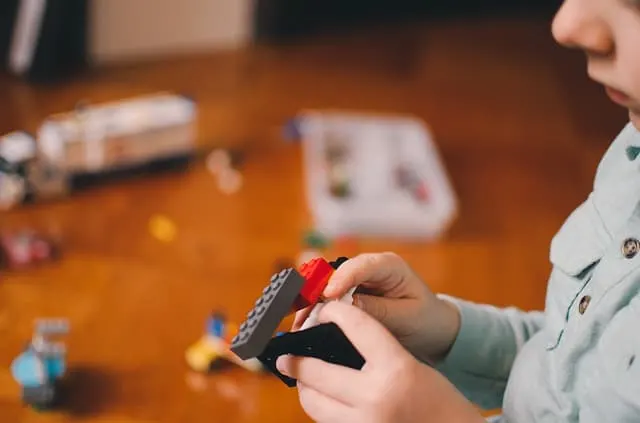
7 Reasons Why LEGO Is the Perfect Gift For Kids
Playing It Safe, Playing It Better
LEGO parts are safe. Don’t take our word for it, though, it has been subjected to scrutiny by various certifying agencies in various countries and has passed their tests. The brand claims that its parts are specially designed to limit them to a child’s play and so that they may not cause any harm. As a parent or guardian, you can, therefore, relax as the little ones create wonders out of the box!
LEGOs are widely considered to be perfect for kids for several reasons, which can be summed up as “Playing It Safe, Playing It Better.”
Let’s explore these aspects further:
Safety: LEGO sets are designed with safety in mind. The bricks are made from durable plastic, ensuring they are safe for children to handle and play with. They are designed to be non-toxic and free from harmful substances, making them suitable for children of different ages. Additionally, LEGO sets often have rounded edges, minimizing the risk of injuries during play.
Safety is a crucial aspect that makes LEGO sets a popular choice for kids.
Here are some specific reasons why LEGO is considered a safe toy:
- Non-Toxic Materials: LEGO bricks are made from high-quality plastic materials that are rigorously tested to ensure they are non-toxic and safe for children to handle and play with. LEGO takes great care in selecting materials that meet strict safety standards and regulations, providing parents with peace of mind.
- Rounded Edges: LEGO bricks typically have rounded edges and corners, reducing the risk of sharp edges that could potentially cause injuries. The smooth design of the bricks minimizes the chance of accidental cuts or scratches, making them safe for young children who are prone to exploring objects with their hands and mouths.
- Size and Choking Hazard: LEGO bricks are generally large enough to prevent accidental swallowing. The larger DUPLO bricks, specifically designed for younger children, further reduce the risk of choking. However, it is still important to supervise young children during play to ensure they do not put small LEGO pieces in their mouths.
- Stringent Safety Standards: LEGO adheres to rigorous safety standards and regulations across the globe. They have robust quality control processes in place to ensure that their products meet or exceed the required safety guidelines. This includes testing the materials, construction, and manufacturing processes to ensure the highest level of safety for children.
- Age-Appropriate Sets: LEGO offers sets that are specifically designed for different age groups. They provide age recommendations on their packaging, helping parents select sets that are suitable for their child’s developmental stage. This ensures that children are engaged in play that aligns with their abilities and minimizes the risk of using LEGO bricks that are too complex or potentially hazardous for their age.
- Safety Precautions: LEGO includes safety instructions and warnings in their product packaging to educate parents and children about potential hazards and how to use the bricks safely. These instructions often remind children not to put LEGO pieces in their mouths, not to throw bricks at others, and to avoid standing on or sitting on their LEGO creations, preventing accidents or injuries during play.
It is worth noting that while LEGO takes great care to ensure the safety of their products, adult supervision is still essential, especially for younger children. Supervision can help ensure that the LEGO pieces are being used appropriately, preventing any misuse that could potentially lead to accidents.
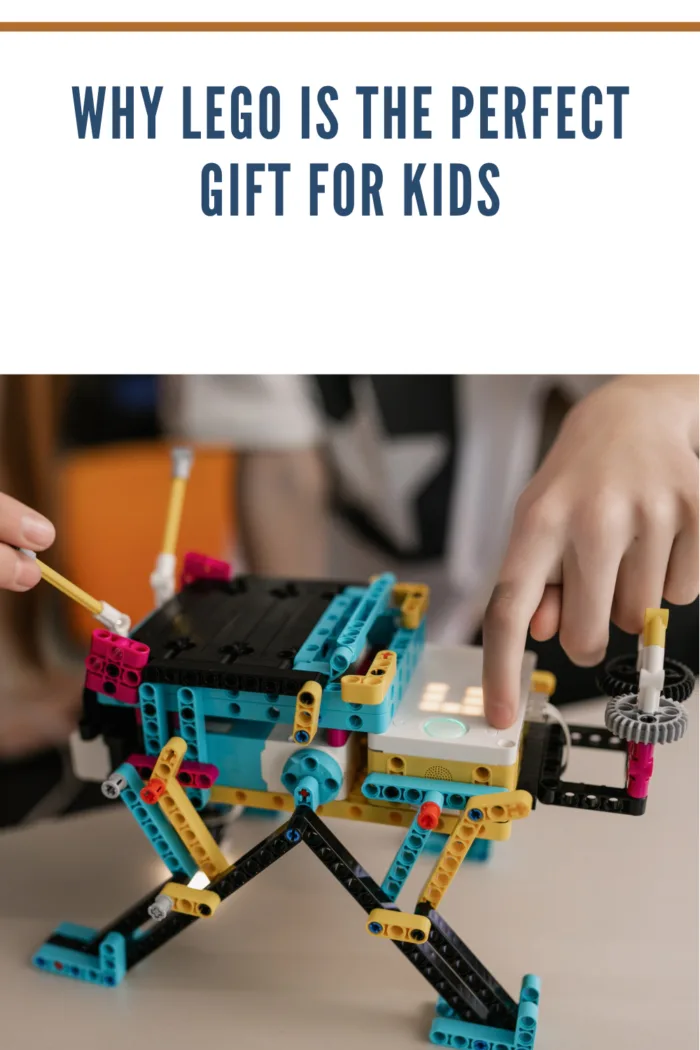
The Birth of Creativity
LEGO is a creative tool. The reason for this is that LEGO is a set of blocks and not a pre-built toy. Conventional toys, which come from the factory ready-built, have a disadvantage. They cannot become anything new. With LEGO, the young one has the option of building his own toy, whatever it may be.
Creativity and Imagination: LEGO sets encourage children to unleash their creativity and engage their imagination. By providing a wide range of building blocks in different colors, shapes, and sizes, LEGO allows kids to construct virtually anything they can imagine. The open-ended nature of LEGO play allows children to explore their creativity, problem-solving skills, and spatial awareness.
The creativity and imagination aspect of LEGO play is one of its most cherished qualities.
Here’s a closer look at how LEGO sets encourage and foster creativity and imagination in children:
- Open-Ended Play: LEGO sets provide endless opportunities for open-ended play. Unlike many other toys with a predetermined purpose, LEGO bricks can be combined in countless ways, allowing children to create and build according to their own ideas and imagination. This open-endedness sparks creativity, as children are not limited by specific rules or instructions.
- Freeform Building: LEGO bricks are designed to be versatile and compatible, enabling children to build structures, vehicles, creatures, and more. The interlocking system of LEGO bricks allows for easy assembly and disassembly, empowering children to experiment and modify their creations as they see fit. This freedom of construction nurtures imaginative thinking and problem-solving skills.
- Storytelling and Role-Playing: LEGO sets often include minifigures and accessories that encourage storytelling and role-playing. Children can create characters, invent scenarios, and act out narratives with their LEGO creations. This imaginative play stimulates language development, narrative skills, and the exploration of different roles and perspectives.
- Building from Imagination: LEGO play encourages children to visualize and plan their creations in their minds before physically constructing them. This mental process of envisioning and designing builds spatial awareness, critical thinking, and problem-solving abilities. Children learn to analyze and interpret their ideas, considering factors such as stability, symmetry, and functionality.
- Personal Expression: LEGO provides a platform for children to express their unique ideas and preferences. They can choose colors, shapes, and sizes of bricks that resonate with their imagination. Whether building realistic structures or fantastical creations, children can imbue their LEGO builds with their personality, making each creation a reflection of their individuality.
- Collaborative Building: LEGO also fosters collaboration and shared creativity. When children come together to build with LEGO, they learn to negotiate, communicate, and combine their ideas. Collaborative building promotes teamwork and encourages the exchange of creative concepts, leading to the creation of more complex and imaginative structures.
- Problem-Solving Skills: LEGO play inherently involves problem-solving as children encounter challenges during construction. They learn to adapt, modify, and find solutions when their designs don’t work as planned. This iterative process of trial and error enhances critical thinking, perseverance, and the ability to think creatively to overcome obstacles.
- Inspiration from LEGO Sets: While LEGO sets can provide specific instructions, they also inspire children to think beyond the suggested models. The sets often include unique and specialized pieces that can spark new ideas and prompt children to incorporate them into their own imaginative creations.
In summary, LEGO’s open-ended nature, freeform building, storytelling possibilities, and opportunities for personal expression and collaboration all contribute to the development of creativity and imagination in children. LEGO play encourages them to explore their imagination, think outside the box, and bring their unique ideas to life.
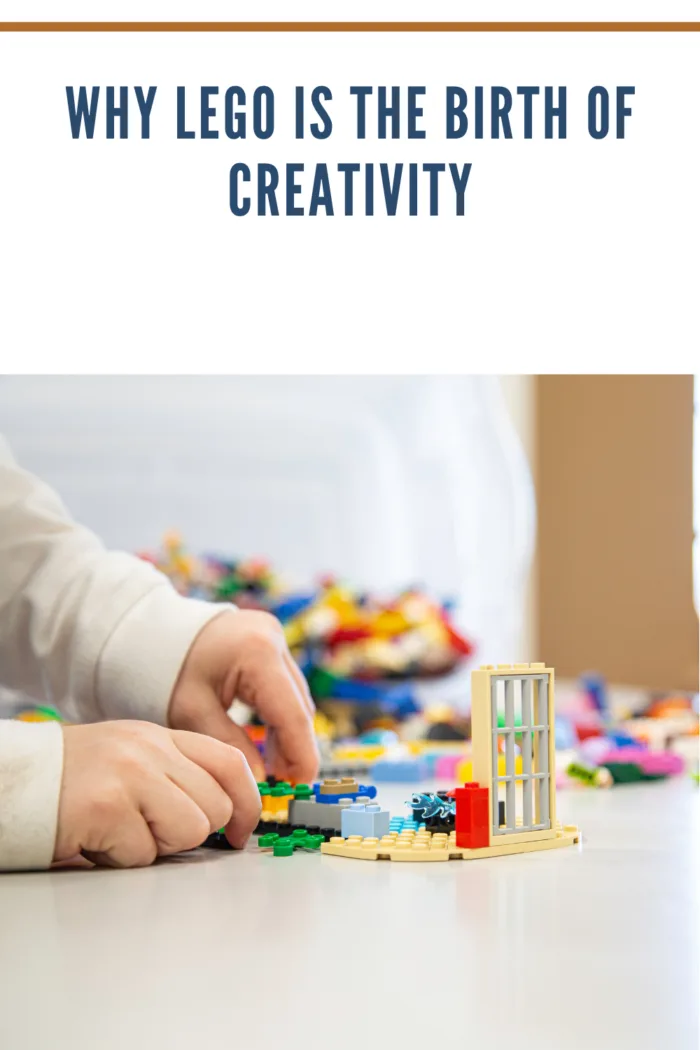
Teamwork and Sharing Is Part of The Ethical Process
This is one of the few games that involve teamwork. Children can use LEGO blocks to foster friendships while inviting friends over and building their dreams out of these little pieces. Though it may seem trivial, such values later culminate into necessary qualities of team spirit and collective involvement.
Teamwork and sharing are integral aspects of the ethical process that LEGO encourages in children.
Here’s an expansion on how LEGO promotes these values:
- Collaborative Play: LEGO sets often involve multiple components or structures that can be built together. This encourages children to collaborate and work as a team to complete a larger project. When children engage in collaborative LEGO play, they learn to communicate, share ideas, and coordinate their efforts towards a common goal. This cooperative play fosters a sense of teamwork and the understanding that working together can lead to better outcomes.
- Sharing of Resources: LEGO play inherently involves sharing resources such as bricks, accessories, and baseplates. Children learn the importance of sharing materials and allowing others to use pieces they may need. Sharing resources promotes fairness, empathy, and the understanding that everyone can benefit when resources are distributed equitably. LEGO encourages children to share their bricks and contribute to a collective play experience.
- Negotiation and Compromise: During collaborative LEGO play, children may have different ideas or visions for their creation. This presents an opportunity for negotiation and compromise. They learn to listen to others, consider alternative perspectives, and find common ground. By engaging in this process, children develop skills in conflict resolution, empathy, and understanding the value of compromise to achieve a collective goal.
- Division of Tasks: Children often divide tasks and responsibilities among team members when working on larger LEGO projects. This division of tasks fosters a sense of responsibility and accountability. Children learn to trust others to fulfill their assigned roles and understand that everyone’s contribution is essential to the success of the overall project. This encourages children to recognize and appreciate the individual strengths and abilities of their teammates.
- Appreciation of Others’ Ideas: LEGO play provides an opportunity for children to appreciate and value the ideas and contributions of their peers. As they work collaboratively, they learn to respect and acknowledge different perspectives, recognizing that diverse ideas can lead to more innovative and exciting creations. LEGO promotes an inclusive environment where children learn to listen, consider, and build upon the ideas of others, fostering a sense of respect and inclusivity.
- Celebrating Shared Accomplishments: When a LEGO project is completed as a team, there is a sense of shared accomplishment. Children learn to celebrate the collective effort and appreciate the contributions of each team member. This shared joy reinforces the notion that collaboration and teamwork are rewarding and that everyone benefits from working together.
- Ethical Values: LEGO instills important ethical values in children through teamwork and sharing. They learn concepts such as fairness, cooperation, respect, empathy, and responsibility. These values are foundational for building positive relationships, fostering a sense of community, and preparing children for future interactions and collaborations.
By emphasizing teamwork and sharing, LEGO helps children develop essential social skills, ethical values, and a mindset of collaboration. These skills and values extend beyond LEGO play and can positively impact their interactions with peers, family, and the broader community.
These Toys Last Long
LEGO is a product that will last long. Owing to their make and material, which is plastic, LEGO blocks serve your little one’s imagination all through his childhood. The other good thing about longevity is that it can serve as a memory when he or she grows up. These little cubes and pieces remain a symbol of a happy and wholesome childhood.
LEGO sets are renowned for their durability and longevity, making them an excellent investment for children.
Here are some reasons why LEGO bricks last long:
- Quality Materials: LEGO is committed to using high-quality materials in their brick manufacturing process. The bricks are made from a durable type of plastic known as ABS (acrylonitrile butadiene styrene), which is known for its strength and resistance to wear and tear. This ensures that LEGO bricks can withstand repeated use and play without easily breaking or becoming damaged.
- Robust Construction: LEGO bricks are designed with precision and durability in mind. The interlocking system of studs and tubes ensures a secure connection between bricks, allowing creations to be sturdy and stable. This robust construction enables children to assemble and disassemble their LEGO structures repeatedly without the bricks losing their shape or structural integrity.
- High-Quality Manufacturing: LEGO maintains strict quality control throughout the manufacturing process. The bricks undergo rigorous testing and quality checks to ensure consistent dimensions, clutch power (the strength of the interlocking mechanism), and resistance to stress. This meticulous attention to detail ensures that LEGO bricks meet the highest standards of durability and longevity.
- Resistance to Fading: LEGO bricks are resistant to fading over time. The colors used in LEGO sets are carefully chosen and formulated to resist the effects of sunlight and UV exposure. This means that even after years of play and display, LEGO bricks retain their vibrant colors, maintaining the visual appeal and longevity of the sets.
- Compatibility and Interchangeability: One of the remarkable features of LEGO is its compatibility across different sets and generations. LEGO bricks produced today can be seamlessly combined with those produced decades ago. This compatibility allows children to mix and match pieces from various sets, expanding their creativity and extending the lifespan of their LEGO collection.
- Design for Disassembly: LEGO sets are designed to be taken apart and reassembled easily. The brick-to-brick connection is strong enough to keep creations intact during play but also allows for effortless dismantling. This design facilitates cleaning, storage, and reconfiguration, ensuring that LEGO sets can be enjoyed again and again without losing their functionality or aesthetic appeal.
- Enduring Play Value: LEGO’s enduring popularity and the vast array of sets and themes available contribute to the long-lasting play value of LEGO bricks. Children can revisit their LEGO sets and creations over time, finding new ways to play, build, and engage their imaginations. This versatility and timeless appeal make LEGO sets enjoyable for years, ensuring that they remain a favorite toy throughout childhood and even beyond.
LEGO’s commitment to quality materials, robust construction, compatibility, resistance to fading, and enduring play value contribute to their exceptional longevity. LEGO bricks can withstand the test of time, offering endless opportunities for play, creativity, and building enjoyment for children and collectors alike.
Age Is Just A Simple Number
With LEGO, this is certainly true. LEGO can adapt to the imagination of children from different age groups. Irrespective of whether it is gifted to a 10-year-old or a 77-year-old, each person who unboxes a set of LEGO will definitely come up with something unique.
LEGO is a versatile toy that transcends age boundaries and allows people of all ages to engage in creative play.
Here’s an expansion on why age is just a simple number when it comes to LEGO:
- Universal Appeal: LEGO sets have a universal appeal that transcends generations. The joy of building and creating with LEGO bricks can be enjoyed by both children and adults alike. Regardless of age, LEGO offers a wide range of sets and themes that cater to different interests, ensuring that there is something for everyone.
- Developmental Benefits: LEGO play offers relevant developmental benefits across various age groups. For children, LEGO aids in the development of fine motor skills, spatial awareness, problem-solving abilities, and creativity. Similarly, for adults, building with LEGO can enhance cognitive abilities, stress relief, and serve as a form of relaxation and mindfulness.
- Inter-generational Bonding: LEGO can bring people of different generations together. It provides a common ground for children to connect with their parents, grandparents, or siblings. Building and playing with LEGO becomes an opportunity for inter-generational bonding, as family members collaborate, share ideas, and create memories together.
- Lifelong Learning: LEGO encourages lifelong learning by fostering curiosity and a love for exploration. It stimulates the imagination and keeps minds active, regardless of age. Whether it’s learning new building techniques, experimenting with different designs, or exploring complex LEGO Technic sets, the learning potential with LEGO is limitless for people of all ages.
- Creativity Knows No Age: LEGO’s open-ended nature allows individuals to unleash their creativity, regardless of their age. The ability to imagine, design, and build is not limited by a number. Adults can rediscover their inner child and tap into their imagination while constructing intricate LEGO structures or even creating their own custom designs. LEGO offers a creative outlet that knows no age boundaries.
- Playful Expression: LEGO provides an avenue for self-expression, regardless of age. Through LEGO, individuals can showcase their unique interests, passions, and personalities. Whether it’s building elaborate cityscapes, recreating scenes from movies, or constructing intricate mechanical models, LEGO allows people to express their creativity and individuality in a fun and playful manner.
- Timeless Fun: LEGO has stood the test of time as a beloved toy for decades. Its enduring popularity across generations is a testament to its timeless appeal. People of all ages can appreciate the joy of opening a LEGO box, sorting the bricks, and embarking on a building adventure. LEGO remains a source of fun, inspiration, and creative satisfaction, regardless of age.
In summary, LEGO breaks the notion that age limits one’s ability to enjoy creative play. Its universal appeal, developmental benefits, inter-generational bonding opportunities, and the freedom to express creativity make LEGO a toy that transcends age. With LEGO, age is indeed just a simple number, and the possibilities for imaginative play are limitless.
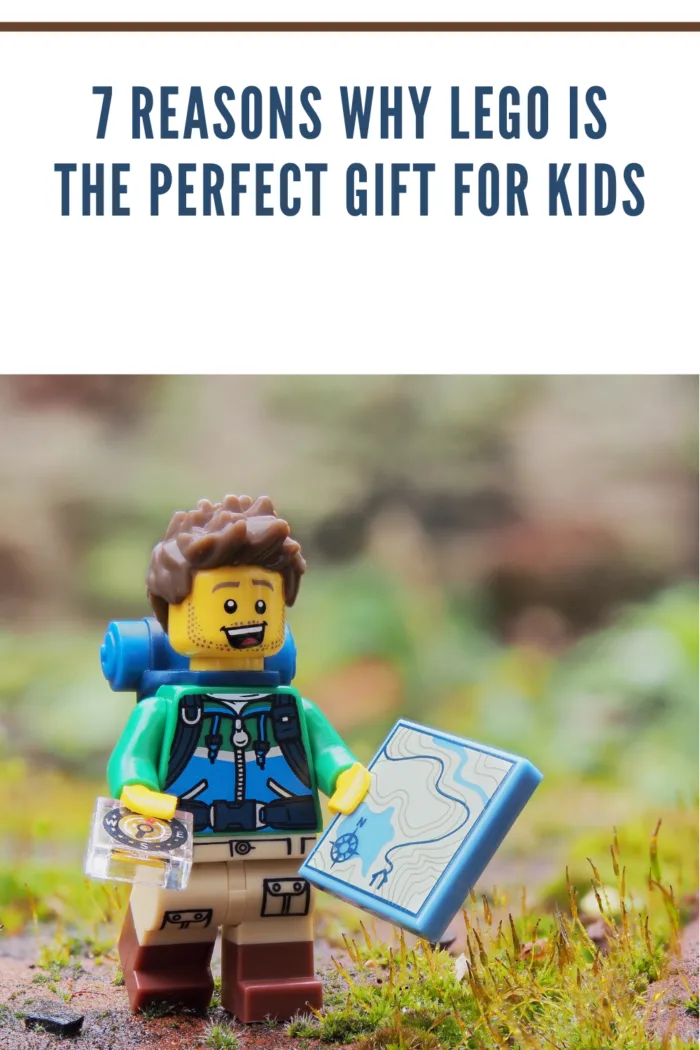
LEGO Is More Diverse Than You Think
LEGO comes in different types. Each of these types represents a particular environment or location. Then, with the help of a little brainstorming, a small child can eventually create a world of possibilities from the blocks of LEGO at his or her disposal. (NatGeo) From architecture to airports, it’s all available and more in a set of LEGO.
LEGO is often celebrated for its diversity, offering more than meets the eye.
Here’s an expansion on why LEGO is more diverse than you may think:
- Inclusive Minifigures: LEGO has made efforts to create a more inclusive range of minifigures, representing diverse ethnicities, genders, and abilities. They have introduced minifigures with different skin tones, hairstyles, and facial features, allowing children to create characters that reflect their own identities and the world around them. This inclusivity promotes representation, empathy, and cultural awareness.
- Diverse Themes and Storylines: LEGO sets encompass a wide range of themes, catering to diverse interests and hobbies. From classic city and space themes to licensed sets based on popular movies, TV shows, and franchises, LEGO offers something for everyone. This diversity of themes allows children to explore their passions, spark their imagination, and engage with narratives that resonate with their individual interests.
- Female Empowerment: LEGO has actively worked to empower girls through their sets and characters. They have introduced female minifigures in traditionally male-dominated fields, such as STEM (Science, Technology, Engineering, and Mathematics) professions, space exploration, and superhero roles. LEGO’s commitment to gender equality promotes inclusivity and encourages girls to pursue their interests without limitations.
- Cultural Representation: LEGO sets also celebrate various cultures from around the world. They have released sets inspired by iconic landmarks, festivals, and historical events from different countries and regions. By representing diverse cultures, LEGO fosters cultural understanding, appreciation, and respect among children, promoting a global perspective and celebrating the richness of human diversity.
- Different Skill Levels: LEGO sets are designed with varying levels of complexity, catering to builders of different skill levels and age groups. From simple brick sets for beginners to intricate and advanced Technic sets for more experienced builders, LEGO ensures that there is a suitable challenge for everyone. This diversity in skill levels encourages children to develop their building skills gradually and challenges them to explore new techniques.
- Customization and Personalization: LEGO encourages customization, allowing builders to modify and personalize their creations. With the availability of various specialized bricks, accessories, and customization packs, builders can add unique touches to their models, further enhancing the diversity of their designs and fostering individuality and creativity.
- Community Engagement: LEGO actively engages with its community of builders and fans, celebrating their diversity and showcasing their unique creations. Through contests, exhibitions, and online platforms, LEGO highlights the creativity and diversity within its fan base, inspiring others to explore new building styles, techniques, and perspectives.
- Social Impact: LEGO also demonstrates its commitment to diversity through initiatives that have a positive social impact. They have partnered with organizations to create special edition sets supporting important causes such as environmental conservation, disability awareness, and social equality. These partnerships raise awareness and encourage dialogue around important social issues.
In summary, LEGO’s commitment to diversity goes beyond the bricks themselves. By offering inclusive minifigures, diverse themes and storylines, cultural representation, and customization options, LEGO creates a platform that reflects and celebrates the diverse world we live in. LEGO’s focus on diversity promotes inclusivity, representation, and creativity, making it a toy that embraces and inspires people from all walks of life.
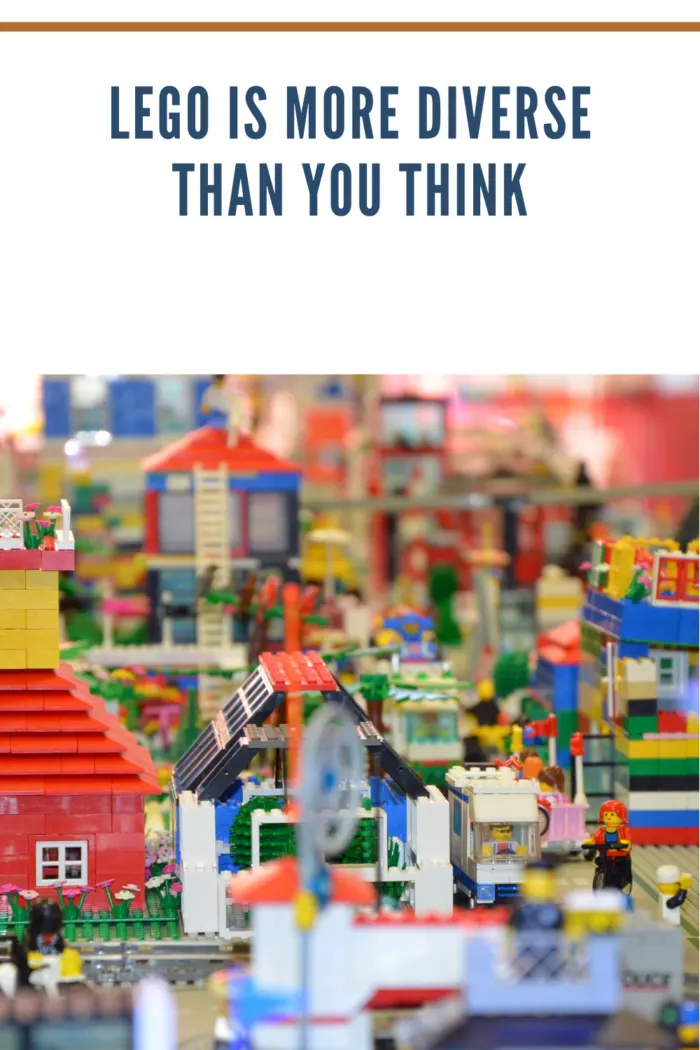
LEGO for Better Skills
According to Preschool Inspirations, LEGO helps develop a number of skills. It aids in eye-hand coordination and also in concentration. When a child occupies himself or herself with a set of LEGO, they actually learn how to focus. These qualities are important for the development and growth of young children. Starting with a few blocks of LEGO, one can gain skills that last a lifetime and help them develop into better human beings for our society and the whole wide world.
LEGO play offers a multitude of benefits and contributes to the development of a wide range of skills in children.
Here’s an expansion on how LEGO helps children acquire and enhance various skills:
- Fine Motor Skills: LEGO play involves precise manipulation of small bricks, requiring children to use their fingers and hands with precision. As they pick up, connect, and separate LEGO pieces, children develop and refine their fine motor skills. This dexterity helps improve hand-eye coordination, finger strength, and control, which are crucial for tasks like writing, drawing, and using tools.
- Spatial Awareness: Building with LEGO encourages spatial awareness as children visualize, plan, and assemble their creations. They learn to understand and manipulate objects in three-dimensional space, recognizing how various pieces fit together and form structures. This spatial reasoning ability translates to better spatial awareness in real-world situations, such as navigating through physical environments or understanding spatial relationships in mathematics and science.
- Problem-Solving and Critical Thinking: LEGO sets often present challenges and problems that children need to solve during construction. They encounter design dilemmas, stability issues, and structural considerations that require critical thinking and problem-solving skills. Children learn to analyze, experiment, and find solutions to overcome obstacles, fostering their ability to think creatively, logically, and adaptively.
- Planning and Organization: LEGO play promotes planning and organization skills. Before starting a construction, children often visualize and plan their designs mentally or through sketches. They learn to break down complex projects into manageable steps, organize and sort LEGO pieces, and follow instructions sequentially. These skills of planning, organization, and task management are transferable to various aspects of life, including academics, time management, and goal setting.
- Creativity and Imagination: LEGO is renowned for fostering creativity and imagination. Children are encouraged to think outside the box, come up with unique ideas, and bring their visions to life. Building with LEGO sparks imaginative thinking, allowing children to create stories, role-play, and invent their own worlds. This creativity nurtures self-expression, innovation, and the ability to think beyond conventional boundaries.
- Patience and Persistence: LEGO play requires patience and persistence. Building complex structures or following detailed instructions can be time-consuming and challenging. Children learn the value of perseverance as they encounter setbacks or encounter difficulties. Through trial and error, they develop resilience, the ability to stay focused, and the motivation to complete projects, fostering a sense of accomplishment and determination.
- Collaboration and Communication: LEGO play often involves collaboration, especially when working on larger projects or building with others. Children learn to communicate their ideas, share responsibilities, negotiate, and work as a team to achieve a common goal. Collaborative building enhances interpersonal skills, cooperation, and the ability to effectively express thoughts and listen to others’ perspectives.
- Storytelling and Language Skills: LEGO sets with themed characters and accessories provide opportunities for storytelling and narrative development. Children can create scenarios, invent characters, and construct narratives around their LEGO creations. This imaginative play stimulates language development, vocabulary expansion, and narrative skills, as children engage in verbal expression, storytelling, and dialogue with others.
In summary, LEGO play offers a rich learning environment that enhances fine motor skills, spatial awareness, problem-solving abilities, planning and organization skills, creativity, patience, collaboration, communication, and storytelling. LEGO provides a holistic approach to skill development, combining cognitive, physical, social, and emotional growth, making it an engaging and educational tool for children.
Final Thoughts
As you see, LEGO is a brilliant choice for a number of reasons. It is a game that lets the child learn, and as they learn, they develop a spirit of inquisitiveness. This said, LEGO also aids in improving a child’s concentration and helps them focus, which are qualities that would definitely help them in the long run. As it can be used to make several types of things, LEGO has no limits of expression and can include ideas from a vast majority of fields, catering to each player personally and contributing uniquely to their development.
LEGO is more than just a toy—it is a powerful tool that promotes learning, creativity, and development in children and individuals of all ages. Its versatility, inclusivity, and diverse range of benefits make it a beloved and enduring playtime favorite.
Through LEGO, children can develop fine motor skills, spatial awareness, problem-solving abilities, and critical thinking skills. They can unleash their imagination, express their creativity, and explore new ideas. LEGO encourages collaboration, communication, and teamwork, fostering social skills and building connections among individuals. It also promotes patience, persistence, and resilience as children tackle challenges and overcome obstacles in the building process.
LEGO’s commitment to diversity, inclusivity, and representation ensures that everyone can find a place within the LEGO world, regardless of their age, gender, or background. It celebrates different cultures, offers a variety of themes, and provides opportunities for personalization and self-expression.
Whether it’s a child constructing their first LEGO creation or an adult indulging in a complex build, LEGO brings joy, satisfaction, and a sense of accomplishment. It encourages lifelong learning, exploration, and the pursuit of new skills and interests.
So, whether you’re a child, a teenager, an adult, or a senior, don’t hesitate to unleash your creativity, dive into the world of LEGO, and experience the endless possibilities it offers. LEGO truly is a remarkable toy that transcends age, sparks imagination, and brings people together in a shared passion for building and creating.
